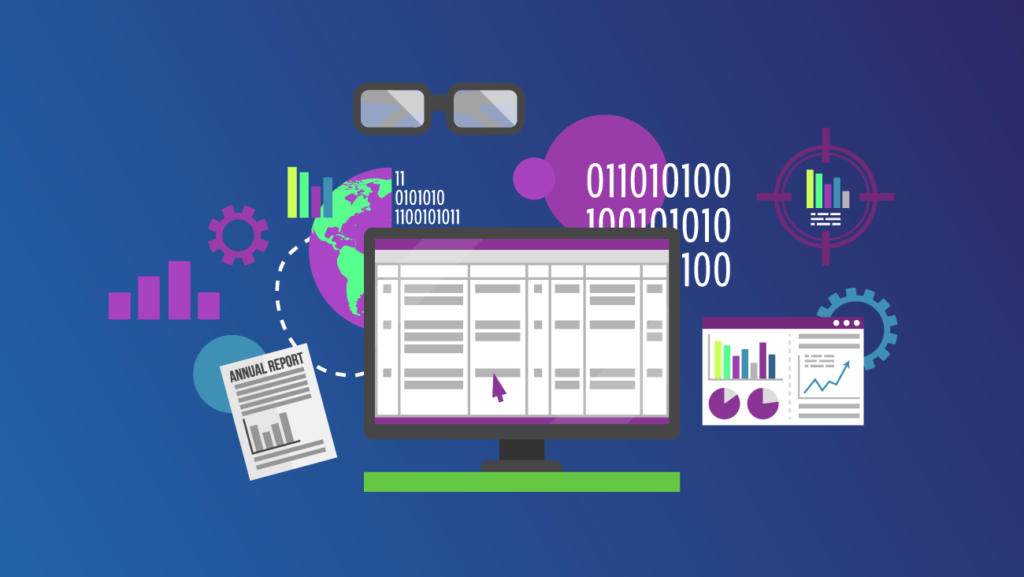Table of Contents
Every conscious company makes its business decisions based on the data. By knowing the exact state of a company at the moment and having correct information about the market, competition, and customers, a business can adjust its strategy and grow in a steady manner.

But in order to bring value, this data should be accurate and trustworthy. So how does one know that the deployed data is suitable for the use? This is where data quality management steps in. To bring out the maximal value from the available data, every company needs to follow the data quality management standards – read the article to learn about them.
What is data quality?
There is no uniform definition of data quality since it might differ for different companies. While company A deals with just one Excel sheet, company B would consider a huge database not enough. Obviously, these companies will be using different approaches to evaluating their data.
But since we need a definition, we can say that data quality is the match value of the data to the intended business use. In other words, it’s the level of the correspondence of the data to the business tasks. If we cannot fulfill a task because of the data, it will indicate its poor quality and vice versa. For example, if your marketing campaign fails because the demographic data about the customers was incorrect, that means the data quality was insufficient.
Data quality attributes
Because business data comes in different sizes and formats, one needs several attributes to evaluate it. Let’s have a closer look at each:
- Consistency: the data is the same across the database (the data is the same in two different systems).
- Completeness: the data has no missing elements or values (a customer profile has a full name, gender, date of birth, address, etc.).
- Accuracy: the data is correct (the name of a customer is not misspelled).
- Orderliness: the data is in the required format (full name of a customer is written in two words, each from a capital letter, with space in between).
- Uniqueness: there is only one (unique) data record across the database (there are no duplicates).
- Auditability: you can access the data anytime and you can track down the changes made to the record (you can enter the database and see that the changes to a customer’s address were made).
It is important to remember that every company will prioritize these attributes in an individual manner. A 100% score for each data attribute is more of a perfect than a real-life scenario. In reality, companies usually aim for something like 80% uniqueness, 90% consistency, 75% accuracy, etc. These thresholds are set in accordance with business goals and requirements and they may be changed in the future.
The importance of data quality
We have already stated that the quality of the data impacts business decisions and the company’s growth. Here are a few more real-life benefits that highlight the importance of data quality.
Marketing purposes
The activity of any company revolves around its clients since they directly impact profitability. Therefore, it is crucial to adjust one’s marketing strategy to the customers, their behavior, and preferences.
However, if the data is incorrect or missing certain values, this might lead to critical errors, such as a wrong demographic portrait of the audience, irrelevant digital advertising, and similar issues. As a result, the company will lose both time and finances as well as customers’ loyalty by presenting them irrelevant offers based on incorrect data.
Inventory and supply chain management
Inventory and supply chain management are other critical aspects that demand careful and accurate management. In order to wisely balance the demand and the offer as well as other related processes, a company needs to have precise information on its inventory, customers’ demand, state of the goods, etc.
Financial reporting
Financial strategy is an essential part of managing a company. In order to grow, retain employees, and remain competitive, an entrepreneur must know all financial aspects of his company from cover to cover. Now, you can imagine the outcome if the financial data is presented incorrectly or misses certain values. Even the tiniest mistake in financial reports can lead to serious consequences in the future so it is important to keep all the information updated and regularly checked.
The stages of data quality management
After we are clear with the definition of data quality and the attributes that are used to assess it, we can move to the actual process of data quality management. It involves several steps and each requires thorough attention.
Defining data quality rules
We already stated that a 100% score for each data attribute is not a common case at all for the majority of companies. The reason for that is that it is incredibly cost- and time-consuming to achieve such a level of compliance so companies usually identify the most important attributes and adjust their data quality management procedures correspondingly.
So how do you set the data quality rules?
First, select a certain piece of data to set the rules for. Let’s take a customer’s full name as an example. If it is the most important information, you would want it to be as accurate as possible. Therefore, you can set a 90% quality threshold for the customer’s full name. Once you decide on the data to evaluate, you can choose the attributes to measure – let’s take accuracy and consistency. That means that the accuracy and consistency attributes for the customers’ full name should both meet the 90% quality threshold.
Once you have done that, you will need to set certain rules that will help evaluate the data. In case of a full name, they might be as following:
- The full name should contain a space in between the two words
- Both words in the full name should start with the capital letter
- The full name should not contain any figures
The rules should be set for every piece of data evaluated and the same goes for the quality thresholds.
Evaluating the quality of the data in accordance with the set rules
Once the rules and the thresholds are set, you can assess your data and see whether it falls under the quality standard that you established.
Getting back to an example of a customer’s full name, we will measure the accuracy of this data with the help of the three rules, described above. And this is where things get interesting.
Once we measured the data, it might turn out that 95% of the full names contain a space between the two words, 70% of the data start with the capital letter, and 80% of the data contain letters only. So if we calculate the average value, it will be 81.6% which is below the 90% set threshold. And that means, your data is not accurate enough. Remember that you will need to repeat the process for every selected piece of data.
Data remediation
After completing the data evaluation process, you will most probably find out that your data needs to be remediated or, in other words, cleaned. Here are the most common steps that you will have to take:
- Analyzing the root cause: identifying the source of the incorrect data and isolating or fixing it.
- Data parsing: implies data standardization and checks that it corresponds to the standards.
- Matching: detecting data duplicates and either merging them into one or deleting the unnecessary data.
- Data enhancement: adding the data from other sources to make it more accurate and valid.
- Monitoring: the process of keeping the data in correspondence to the standards and requirements.
If that sounds like too much, do not worry – there are plenty of available data quality management tools. For better results, it is highly recommended to use several tools at once as most of them are designed for a specific purpose (like data matching) and they cannot perform other functions.
Data quality management team: the main roles
Even though it is not obligatory to have a dedicated data quality management team, it would be much easier to handle the data if you assign the key roles. Though the composition might vary, the most common roles are:
- Data owner: a senior-level executive who controls data quality and ensures it corresponds to the standards.
- Data consumer: a person who uses the data but also reports about the errors and defines data standards.
- Data producer: a person who captures the data and makes sure it complies to the requirements of data consumers.
- Data analyst: a person who is responsible for analyzing and assessing the data.
Data quality management: general guidelines to follow
The process of managing the quality of your data is rather complex and does not end on data assessment and remediation. In order to always have correct and accurate data at your disposal, it is recommended that you follow certain guidelines on data quality management.
Emphasize the importance of data quality management on all levels
It’s not enough if only a few people in the company understand the importance of data quality and the possible risks that incorrect data brings. In order to mitigate these risks and derive more value from the available data, it is critical to make data quality a top priority and ensure that everyone understands that.
To start with, you can create an enterprise-level strategy on data quality management and make it available for all the employees. Next, assign user roles and assemble a data quality team that we mentioned above. You will also need to work on a data quality management process that will be designed specifically for your company. And obviously, you will need an efficient system to manage these processes.
Automate the data entries
Human errors are a common thing especially if that means manual data entries and a massive number of records. Therefore, one of the simplest yet most efficient ways to prevent the appearance of errors is to automate the data entries. For different companies, the automation would be different so you need to carefully think about what you can really automate and whether you have resources to do so.
In addition to that, you can also implement duplicate prevention by creating certain duplicate detection rules and applying them to your system.
Focus on preventing errors
Instead of reacting to an issue, smart companies do their best to prevent the occurrence of the issues. As a result, they are able to minimize the number of data-related errors and significantly improve their processes.
Some of the preventative methods in terms of data quality management include:
- Always do the root cause analysis for every issue in order to identify the source of the problem and eliminate it,
- Try keeping a data quality issue log to stay well-informed about the issue itself and its resolution,
- Come up with data quality KPIs and try linking them to the business KPIs.
Summing up
Data quality management is an obligatory practice for any company that relies on the data and wants to enhance its strategy with accurate business decisions. But due to the complexity of the process, it is highly recommended to create a solid strategy on implementing the data quality management and find the necessary tools that will help you seamlessly manage it.
Data is the driving force of the modern business world, so do not miss the chance to get the maximal value from it. But in order to do so, you will need a reliable technological partner who will be able to offer the most suitable solution for your business needs. SoftTeco has over 10 years of experience in working with the data and its management and we will gladly design a custom data management solution specifically for your business.


Comments